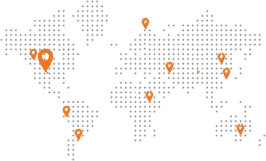Alaska Rocks 2005, The 40th U.S. Symposium on Rock Mechanics: Rock Mechanics for Energy, Mineral and Infrastructure Development in the Northern Regions, Anchorage, Alaska, June 25-29, 2005
Authors: B. F. McGunegle and A. Adu-Acheampong (AAI)
The stability of an underground limestone mine became a concern following numerous roof falls. Factors influencing roof behavior were identified and a program of investigation initiated to understand the causes of the roof falls and to develop recommendations for changes in mine layout and ground support. Factors of concern included high horizontal stress, the presence of water or gas in the roof, and the influence of jointing and fracturing in the roof rock. The investigations included site visits, stress measurements, and three-dimensional numerical analysis. Mine roof falls identified on the mine map were tabulated and categorized according to size and orientation and, where possible, by other distinguishing features such as jointing or water pressure. The vertical in situ component of stress was determined to be approximately 11.72 MPa, about double the magnitude from gravity loading alone. The depth of cover for the mine ranges from slightly more than 167.64 m to more than 243.84 m. The numerical simulations indicated that reduction in span widths from 15.24 to 12.19 m (E-W) and from 12.19 to 9.14 m (N-S) while maintaining center dimensions did not appreciably change the stability factors, and that the orientation of the mine layout was near optimum.



